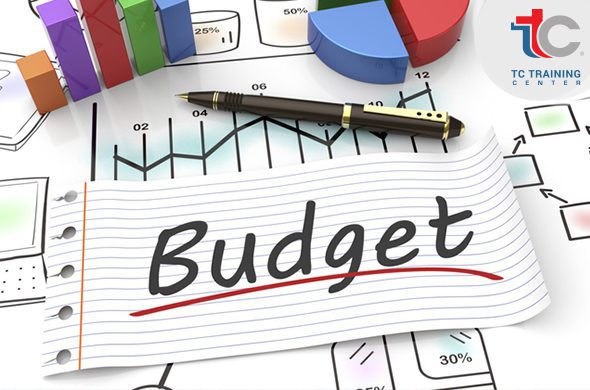Budget Preparation Forecasting & Planning Process
Start time
Finish time
Address
Course price

The idea of the program
Many organizations use budgets and forecasting as a means of providing and updating tactical operational plans and controlling costs. But global organizations use these tools, and other tools, within a framework designed specifically to develop and implement business strategy and organizational performance management. This course is essential for all professionals who need to master their budgeting and financial forecasting skills by learning how to use the tools available in the Excel program so that realistic work plans can be developed.
The course will highlight the following
- Key steps in designing and implementing effective business strategies.
- How to translate strategy into achieving budget targets to manage implementation.
- Predictable techniques for planning and budgeting.
- Best practices in the preparation and implementation of budgets.
- How to use deviations to monitor and identify deficiencies in the implementation of the strategy of the institution.
- How to use MS Excel tools in forecasting and budgeting.
- Program Goals
- The role of the company strategy in building the budget and financial planning.
- Using quantitative measures in financial forecasting and budget building.
- Design a model of the current budget using MS Excel starting with the financial forecasting stage through the preparation of the financial statements to the end of the analysis of budget deviations.
- Application of liability accounting and performance evaluation.
- Designing an investment balance model using MS Excel starting with preparing the expected cash flow plan for the project and then evaluating the investment project evaluation criteria
Impact of training on the institution:
Participants in the course will achieve the benefits and benefits of their organization through the knowledge and skills they will return to their work after they have acquired it.
- Translate the strategic plan of the company on how to build the current budgets
- And investment that serve short and long-term targets.
- The use of quantitative methods in financial forecasting
- Design a financial model using the Excel program to prepare the current budget of the company.
- Application of liability accounting and performance evaluation.
- Designing a financial model to evaluate investment projects using the Excel program.
Effect of trainee training:
- The training program aims at developing events in the participants’ awareness
- The role of the company strategy in building the budget and financial planning.
- Using quantitative measures in financial forecasting and budget building.
- Design a model of the current budget using MS Excel starting with the financial forecasting stage through the preparation of the financial statements to the end of the analysis of budget deviations.
- Application of liability accounting and performance evaluation.
- Designing an investment balance model using MS Excel starting with preparing the expected cash flow plan for the project and then evaluating the investment project evaluation criteria.
For whom this program:
This training course is suitable for a wide range of employees from companies, institutions and government organizations as well as anyone working in the field of finance, investment, budgeting and planning services or anyone interested in financial accounting and reporting.
- Financial managers, deputy financial directors, observers and treasury officials.
- Investment managers in institutions.
- Planning managers in institutions.
- Internal auditors.
- Specialists responsible for financial reporting.
- Accountants, project managers and budget analysts.
Outlines:
First day
Strategic Planning
- Formulating the company strategy
- Strategic Analysis: Analysis of the internal and external environment of SWOT Analysis
- Strategic Analysis: Porter’s five forces
- Strategic Analysis: PESTLE
- Translation of the strategy of the company in the form of strategic map Startgy Map and Balanced Scorecard (BSC)
- Strategic objectives and their role in drafting the long-term goals of the company
Second day
Quantitative methods of financial forecasting in budget estimates
- The studies on which the revenue estimate is based
- Analyse actual revenue results
- Study the economic conditions of markets and distribution areas
- Determine the sales structure
- Determine the prices of the products that make up the sales structure
- Estimation of time series
- Estimate the overall trend
- Estimation of seasonal changes – cyclical changes – sudden or occasional changes
- Process Status: Predict quarterly revenue for a company of seasonal nature using MS Excel
Third day
Preparation of financial statements
- Estimate production budget
- Estimate the budget of production costs
- Assessment of procurement requirements and inventory scheduling
- Appreciation of sales and administrative expenses
- Estimated income statement numbers
- Cash budget numbers
- List the estimated financial position
- Case Study: Designing a Budget Model for a Virtual Company using MS Excel
Fourth day
Accountability of responsibility and construction of performance appraisal standards
- Quadratic analysis of budget deviations
- Analysis of income deviations
- Investigation of deviations
- Identification of responsibility centers
- Evaluate the performance of responsibility centers
Fifth day
Financial planning and long term investment
- Time value of money
- Estimated income lists for the project
- Cash flow layout
- Determine the appropriate discount rate for the project
- Cost of Capital
- Net present value of the project is calculated
- Calculating the internal rate of return and the adjusted internal rate of return
- Discounted Payback Period
- Case Study: Designing a long-term investment valuation model using MS Excel




